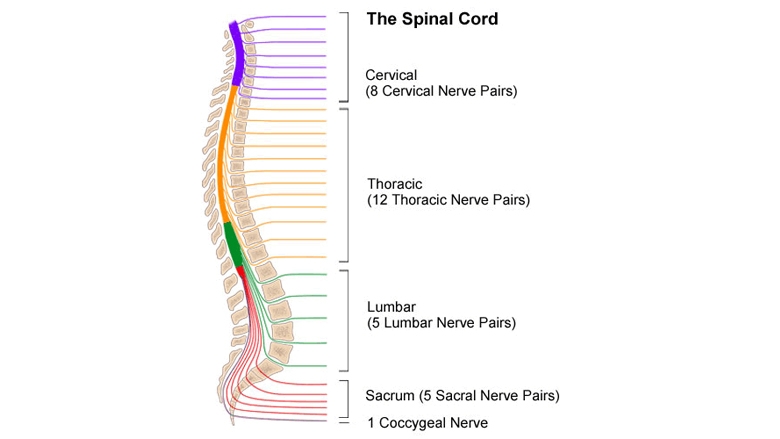Your spine, a magnificent network of bones, ligaments, and nerves, supports your body and makes movement possible. It is nonetheless susceptible to a number of wounds that may have grave repercussions. This thorough article delves into six of the most prevalent spine injuries and their underlying causes.
1. Herniated Discs
When the supple, gel-like interior of an intervertebral disc bulges through its robust exterior, the condition is referred to as a herniated disc, also known as a slipped disc or burst disc. This may cause surrounding nerves to get compressed, which may cause pain, numbness, or weakness in the afflicted region. The gradual deterioration of the spine over time is a common cause of herniated discs. The discs may lose their flexibility and become more vulnerable to injury as they age naturally. Additionally, unexpected hard lifting or traumatic traumas may cause a herniated disc. The risk of this injury might be increased by bad posture and extra body weight.
2. Spinal Fractures
Breaks or cracks in the vertebrae, the little bones that make up your spine, are referred to as spinal fractures. The severity of these fractures may range from microscopic hairline cracks to total breaks. Fractures may cause discomfort, instability, and even spinal cord injury depending on where and how they occur. Numerous factors may lead to spinal fractures. Traumatic injuries are often caused by falls, auto accidents, or sports-related injuries. Osteoporosis, a bone-weakening disorder, may increase the risk of fractures from everyday activities or even little injuries. Cancer is one medical disease that may weaken the vertebrae and increase the risk of fracture.
3. Spinal Cord Injuries
Damage to the spinal cord, the network of nerves that transmits signals from the brain to the rest of the body, results in spinal cord injuries (SCIs). Different levels of paralysis and loss of feeling below the location of the damage may be brought on by SCIs. They may be categorized as either full (no sensory or motor function is still present below the damage) or incomplete (some sensory or motor function is still present). Traumatic incidents like vehicle accidents, slips and falls, sports injuries, or violent crimes are the main causes of SCIs. Medical problems such tumors, infections, or degenerative illnesses may cause non-traumatic SCIs. In instances of SCI, prompt medical attention is essential to reduce damage and increase the likelihood of recovery.
4. Spinal Stenosis
The spinal canal, which houses the spinal cord, narrows due to spinal stenosis. This constriction may put strain on the spinal cord and nerves, resulting in discomfort, weakened sensations, and numbness in the lower back and legs. Spinal stenosis is often linked to aging naturally. Age-related changes in the spine, such as bone spurs or ligament thickening, may restrict the amount of space that is accessible inside the spinal canal. Spinal stenosis may also be worse by illnesses like arthritis or ruptured discs. Rarely, people may have a constricted spinal canal at birth, which may eventually cause stenosis. If you are suffering from anything similar, search for an expert in your nearby area to examine you; such as a spine specialist in Mesa, AZ if you live in Arizona.
5. Spondylolisthesis
When a vertebra in the spine slides forward or backward in respect to a neighboring vertebra, it is known as spondylolisthesis. Back discomfort, muscular spasms, and in extreme situations, spinal nerve compression, may all be brought on by this misalignment. Numerous things may lead to spondylolisthesis. It might be congenital, which would indicate you were born with a flaw that makes you more susceptible to the ailment. Spondylolisthesis may also be brought on by the repetitive stress on the spine that is often observed in sports. This disorder may be brought on by degenerative changes in the spine brought on by age, such as the collapse of discs and joints.
6. Compression Fractures
Due to reduced bone density, compression fractures result in the collapse of one or more vertebrae. These fractures may result in excruciating pain, a loss of height, and a stooped posture. Osteoporosis, a disorder characterized by weakening bones, is the main contributor of compression fractures. The vertebrae are more prone to fractures from routine activity or slight trauma when bone density declines. Additionally, some drugs, cancer, or metabolic abnormalities might cause compression fractures.
Conclusion
For prevention, early intervention, and well-informed treatment choices, it is crucial to comprehend the major forms of spinal injuries and their causes. While some spinal injuries result from violent incidents, others may appear gradually as people age or have underlying medical issues. Seek immediate medical assistance if you think you could have a spinal injury or if you have symptoms including ongoing pain, weakness, or changes in feeling. An accurate diagnosis and timely treatment may greatly enhance results and support you in keeping your spine healthy.
Sources
https://www.njspineandortho.com/six-most-common-causes-spinal-injuries/
https://my.clevelandclinic.org/health/diseases/12098-spinal-cord-injury
https://www.mayoclinic.org/diseases-conditions/spinal-cord-injury/symptoms-causes/syc-20377890


